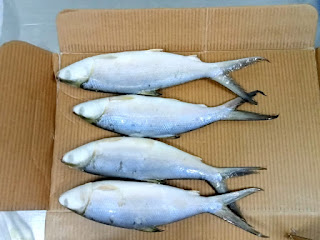Milkfish suppliers and product Indonesia - with best quality
Milkfish suppliers from indonesia is one best Suppliers because the milkfish indonesia will have best price and quantity. The Milkfish is one great fish in the world because usually can cook for many different food like presto milkfish, sushi, etc. The nutrition from Milkfish is also good from other fish. The price of milkfish also more affordable from other fish.
Milkfish, also known as bangus, is a popular product. It is commonly consumed in many Asian countries and is appreciated for its mild flavor and tender, flaky texture. Here are some common milkfish products:
Fresh Milkfish: Whole fresh milkfish is often available in fish markets and seafood stores. It can be cooked in various ways, such as grilling, frying, baking, or steaming.
Frozen Milkfish: Frozen milkfish is convenient for storage and transportation, especially for international trade.
Milkfish Fillets: Filleted milkfish is boneless and ready to cook. It's a convenient option for those who prefer not to deal with the bones.
Dried Milkfish (Daing or Bulad): Drying milkfish is a preservation method that results in a shelf-stable product. Dried milkfish, known as "daing" or "bulad" in the Philippines, is often marinated and then fried before serving.
Canned Milkfish: In some places, you can find canned milkfish products, usually preserved in oil or sauce.
That is some milkfish Suppliers product. Our company is ready to provide best product for the milkfish suppliers indonesia. Here are some key points about milkfish suppliers production :
1. Suitable Environment: Milkfish are typically raised in brackish water or freshwater environments, such as ponds, tidal areas, or fish pens near coastal areas. They thrive in areas where there is access to both marine and freshwater.
2. Breeding and Hatcheries: The production process begins with the collection of milkfish broodstock (adult fish) from the wild or from selected breeders. These broodstock are then induced to spawn in controlled conditions in hatcheries. The eggs are fertilized and hatched, and the resulting larvae are nursed until they reach a certain size before being transferred to grow-out ponds or cages.
3. Nursery Phase: After hatching, the tiny milkfish larvae are transferred to nursery ponds or tanks, where they are provided with suitable feeds and conditions to grow for a few weeks until they reach fingerling size.
4. Grow-Out Phase: The fingerlings are then moved to larger ponds or fish cages in tidal areas, where they will be further grown to marketable size. In these grow-out areas, milkfish are fed with formulated feeds or natural food present in the water, depending on the production system.
5. Feeding: Milkfish are primarily herbivorous and feed on algae and plankton, but in commercial farming, they are also fed with pelleted or extruded feeds to ensure optimal growth rates.
6. Water Management: Maintaining water quality is crucial in milkfish production. Proper water exchange and monitoring are essential to prevent disease outbreaks and promote healthy growth.
7. Harvesting: The time it takes for milkfish to reach marketable size varies depending on factors such as water temperature, feed quality, and stocking density. Once they reach the desired size, they are harvested using various methods, such as seine nets or harvesting traps.
8. Processing and Distribution: After harvesting, milkfish may undergo processing, such as cleaning, scaling, and gutting, before being transported to local markets or processing plants for further value-added products.
9. Sustainability: Sustainable practices, such as using responsible feed, minimizing environmental impact, and monitoring water quality, are increasingly important in modern milkfish production to ensure the long-term viability of the industry.
For more information about size and price of milkfish Supplier Indonesia, Please contact Us.
.png)




















0 comments: